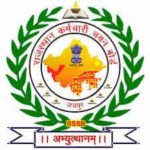Hello and welcome to exampundit . So here is the very first of the many upcoming MICRO-MOCKS(previously Pop Quiz)! We will be providing it 3 times every week, but if you all appreciate and participate, we will make it more frequent!
Rules:
Post answers according to the following format(s)
1-2
2-3
3-4
Or
12345
54213
In case the options are ABCD, use the Appropriate Options.
Do Not Rectify anyone.
DO NOT GIVE SOLUTION WITH YOUR ANSWER.
DO NOT GIVE SOLUTION WITH YOUR ANSWER.
If you have any doubt regarding any question of the quiz, kindly ask after the quiz is over i.e answers given.
Do Not CHAT here. If you have any query, use today’s Ask The Mentor Page.
At least 8 Attempts for Scores.
Exampundit.in reserves the right to choose winner or give scores.
English Language
Directions (Q. 1–5):
Read the following passage carefully and answer the questions given below it.
Certain words are given in bold to help you locate them while answering some of
the questions.
Read the following passage carefully and answer the questions given below it.
Certain words are given in bold to help you locate them while answering some of
the questions.
National integration is a problem
that has been considered to be of vital importance all over the world. This is
of special significance to our country. Leaders like Abraham Lincoln and
President Kennedy fell victims to bullets of assassins in their efforts to
bring about greater unity among the people and greater integration of the
various parts of the country. Many social reformers believed that integration
of a country could survive on the foundation of faith, brotherhood, and
co-operation. The conditions in India were diversified with factors like caste
system, colour etc. It wasn’t an easy task to bring about the brotherhood
feeling among our people in India. Hindu rulers, though professing the same
faith, were divided among themselves. The division was perpetuated by later
Muslim rulers. But during British rule the policy of divide and rule became a
cause of conflict. The dynamism of Sardar Patel led independent states to
become integral part of the Indian Union. This was the first step towards
national integration. Today national integration remains a distant goal. Love
for power, craze for riches, religious and linguistic fantasia makes
integration impossible. Under these circumstances a need for national
integration is greatly felt. To achieve this one must be made to understand
that the evils that result in the economic, social, religious and political decisions
must be rooted out. They should also understand the emphasis of truth, that
ideologies may differ, but that they should not be vehicles for prevention of
the achievement of unity. The ideal of universal brotherhood should underline
the teachings of all religions. The process of introspection should be
cultivated from the grassroot level. Children at school must be taught the
values of integration and its advantages. Young minds should be taught the
values of national integration and its advantages.
that has been considered to be of vital importance all over the world. This is
of special significance to our country. Leaders like Abraham Lincoln and
President Kennedy fell victims to bullets of assassins in their efforts to
bring about greater unity among the people and greater integration of the
various parts of the country. Many social reformers believed that integration
of a country could survive on the foundation of faith, brotherhood, and
co-operation. The conditions in India were diversified with factors like caste
system, colour etc. It wasn’t an easy task to bring about the brotherhood
feeling among our people in India. Hindu rulers, though professing the same
faith, were divided among themselves. The division was perpetuated by later
Muslim rulers. But during British rule the policy of divide and rule became a
cause of conflict. The dynamism of Sardar Patel led independent states to
become integral part of the Indian Union. This was the first step towards
national integration. Today national integration remains a distant goal. Love
for power, craze for riches, religious and linguistic fantasia makes
integration impossible. Under these circumstances a need for national
integration is greatly felt. To achieve this one must be made to understand
that the evils that result in the economic, social, religious and political decisions
must be rooted out. They should also understand the emphasis of truth, that
ideologies may differ, but that they should not be vehicles for prevention of
the achievement of unity. The ideal of universal brotherhood should underline
the teachings of all religions. The process of introspection should be
cultivated from the grassroot level. Children at school must be taught the
values of integration and its advantages. Young minds should be taught the
values of national integration and its advantages.
1. The killers of Abraham Lincoln and Kennedy
1) wanted to rule the country themselves.
2) opposed the idea of national integration.
3) wanted to destabilise the government.
4) wanted to support militancy.
5) challenged the government.
2. Abraham Lincoln and Kennedy were the advocates of
1) non-violence
2) unity among all the countries of the world
3) peace and harmony in the world
4) national integration
5) None of these
3. Why was it considered a difficult task to drive home the sense
of fraternity among Indians?
of fraternity among Indians?
1) because Indians were opposed to any change in the social
system
system
2) because Indians lacked the sense of fraternity
3) because Indians were less educated
4) because Indians opposed the western philosophy of life
5) None of these
4. Which of the following is seen as the first step towards national
integration in our country?
integration in our country?
1) All the independent states coming under one umbrella
2) Muslim rulers coming on a single platform
3) Britishers establishing their control all over India
4) People coming together after the end of the British rule
5) None of these
5. Which of the following has not been seen as an obstacle to
the idea of national integration?
the idea of national integration?
(i) hunger of power
(ii) going mad after wealth
(iii) craze for higher education
(iv) religious intolerance
1) Only (i) and (iii)
2) Only (ii) and (iv)
3) Only (iii)
4) Only (iv)
5) None of the above
Quantitative Aptitude
Directions (Q. 6–8): In
each of the following number series only one number is wrong. Find out that
wrong number.
each of the following number series only one number is wrong. Find out that
wrong number.
6. 3 5 11 29
87 314
87 314
1) 87 2) 11 3) 29
4) 314 5) None of these
7. 12 13 20 48
112 237
112 237
1) 13 2) 237 3) 20
4) 48 5) None of these
8. 8.1 9.2 17.3 26.5
43.8 71.5 114.1
43.8 71.5 114.1
1) 17.3
2) 26.5
3) 43.8
4) 9.2
5) None of these
Sponsored
(adsbygoogle = window.adsbygoogle || []).push({});
Directions (Q.
9–10):What approximate value should come in place of the question mark(?) in
the following questions? (You are not expected to calculate the exact value.)
9–10):What approximate value should come in place of the question mark(?) in
the following questions? (You are not expected to calculate the exact value.)
9. 63.9872 × 9449.8780 ÷ 243.0034 = ?2
1) 2489
2) 2500
3) 50
4) 45
10. 5237.897 – 6629.010 + 7153.999 – 2205.102 = ?
1) 6340
2) 4688
3) 5240
4) 3558
5) 6290
Reasoning Ability
Directions (Q. 11–15):
Study the following information carefully and answer the given questions.
Study the following information carefully and answer the given questions.
P, Q, R, S, T, V, W and X are sitting in a straight line
facing north but not necessarily in the same order. R sits third to the left of
P. T sits fifth to the right of R but neither sits at any of the extreme ends.
Q and S are immediate neighbours of each other but neither of them is an
immediate neighbour of T. Only one person sits between Q and V, who is not an
immediate neighbour of P. X does not sit at an extreme end.
facing north but not necessarily in the same order. R sits third to the left of
P. T sits fifth to the right of R but neither sits at any of the extreme ends.
Q and S are immediate neighbours of each other but neither of them is an
immediate neighbour of T. Only one person sits between Q and V, who is not an
immediate neighbour of P. X does not sit at an extreme end.
11. Who among of the following pairs sit at the extreme ends
of the line?
of the line?
1) X, R
2) V, W
3) V, X
4) Q, W
5) None of these
12. How many persons sit between X and R?
1) Two
2) Three
3) Four
4) Five
5) Cannot be determined
13. If all the persons are made to sit in alphabetical order
from left to right, the positions of how many of them will remain unchanged as
compared to the original arrangement?
from left to right, the positions of how many of them will remain unchanged as
compared to the original arrangement?
1) None
2) One
3) Two
4) Three
5) Four
14. What is the position of V with respect to X?
1) Fourth to the left
2) Fifth to the left
3) Third to the right
4) Fourth to the right
5) None of these
15. Four of the following five are alike in a certain way
based on their seating arrangement and so form a group. Which is the one that
does not belong to that group?
based on their seating arrangement and so form a group. Which is the one that
does not belong to that group?
1) VS
2) QX
3) PW
4) TS
5) RP
Answer
2
4
5
1
3
1
3
5
3
4
4
5
1
3
1
3
5
3
4
2
2
2
2
4
Solutions:
1. 2; It has been mentioned that Abraham Lincoln and Kennedy
fell victims to the bullets of assassins in their efforts for national
integration.
fell victims to the bullets of assassins in their efforts for national
integration.
2. 4
3. 5; Indian society was divided on the basis of caste,
colour etc.
colour etc.
4. 1; Sardar Patel’s role in bringing all the independent
states under the Indian Union
states under the Indian Union
5. 3
6. 1; Here, 3 × 1.5 + 0.5 = 5
5 × 2 + 1 = 11
11 × 2.5 + 1.5 = 29
29 × 3 + 2 = 89
89 × 3.5 + 2.5 = 314
Hence, in the given series 87 is a wrong number and should
be replaced by 89.
be replaced by 89.
7. 3; Here,
12 + 13 = 13
13 + 23 =
21
21
21 + 33 = 48
48 + 43 =
112
112
112 + 53 = 237
Hence, in the given series 20 is a wrong number and should
be replaced by 21.
be replaced by 21.
8. 5; Here,
8.1 + 9.2 = 17.3
9.2 + 17.3 = 26.5
17.3 + 26.5 = 43.8
26.5 + 43.8 = 70.3
43.8 + 70.3 = 114.1
Hence, the wrong number is 71.5. It should be replaced by
70.3.
70.3.
9. 3;
10. 4;
The seating arrangement is given below:
V R Q S P X T W
In alphabetical
order: P Q R S T V W X
11. 2 ;
12. 2;
13. 2;
14. 2;
15. 4; In all other options the second person of the pair
sits third to the right of the first person of the pair.
sits third to the right of the first person of the pair.
Winners:
- Simi
- Sourav
- Chitrath/SOURAV
Regards
Team ExamPundit
This post was last modified on November 27, 2017 8:55 am





